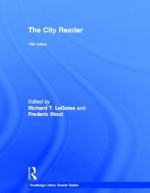|
This section contains 933 words (approx. 3 pages at 400 words per page) |

|
Part III: Urban Society and Culture Summary and Analysis
Lewis Mumord's "What is a City?" (1937) discusses the urban experience as central to human life. Concerning development, Mumford presents a variety of ideas about the planning of cities. He presents the city as a collection of primary groups assembled together, with their physical organization determining levels of "drama," or conflict, that arises. The city is the framework for these interactions. Within the city, social needs are most important to Mumford, and dictate limits on the size of buildings, the density of population, the area of developments, and so on. He writes of the current trend of dissociation and decentralization of the urban life, discussing the "postnucleated city." Mumford states that finding the appropriate structures that align with sociological understanding will be the task of the next generation.
In "Urbanism as a...
(read more from the Part III: Urban Society and Culture Summary)
|
This section contains 933 words (approx. 3 pages at 400 words per page) |

|




